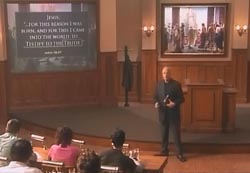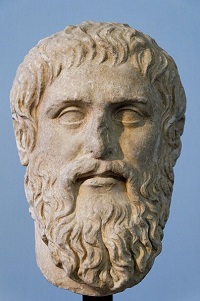Evolutionists claim to be answering a problem posed to them, but they often avoid the problem or miss the mark.
 Kahn: Kirk – You’re still alive old friend. Kahn: Kirk – You’re still alive old friend.
Kirk: Still, – “old friend”. You’ve managed to kill everyone else, but like a poor marksman, you keep missing the target! And so admiral1 Kirk taunts Kahn, a genetically engineered “super” human who is supposed to be superior to us mere humans in every way – physically, mentally etc. In another classic line, when Kirk is trying to get Kahn to follow the Enterprise into a nebulae where both ships would lose the benefits of key systems such as shields, Kirk taunts Kahn again, saying “I’m laughing at the superior intellect,” a taunt sufficient enough to get Kahn to follow them in. I don’t mean to taunt the poor misguided evolutionists, but I do hope the air of superiority they tend to express motivates them to try to provide an answer to the questions posed in the post “Windtalkers and DNA” because the responses I’ve had so far don’t address the issues. So like Kirk I say, like poor marksmen, they keep missing the target of the difficulties that DNA poses. So let me spell it out the difficulties for them, – and give them a clear target to hit. But first here is a sample of the poor marksmanship: Continue Reading |


 The 19th century classic “Flatland” by Edwin A. Abbott is an allegory of the resulting social problems and intellectual impasse that results when a person who has been enlightened (and sees a truth beyond what’s normally possible in the physical realm) tries to present that truth to the unenlightened. Flatland is so named because it, and all its inhabitants live in a two dimensional world. When a 3 dimensional object – a being in the shape of a sphere – is introduced to a 2 dimensional Flatlander – a mathematician – the response of humans to revelations (by way of analogy) is on display.
The 19th century classic “Flatland” by Edwin A. Abbott is an allegory of the resulting social problems and intellectual impasse that results when a person who has been enlightened (and sees a truth beyond what’s normally possible in the physical realm) tries to present that truth to the unenlightened. Flatland is so named because it, and all its inhabitants live in a two dimensional world. When a 3 dimensional object – a being in the shape of a sphere – is introduced to a 2 dimensional Flatlander – a mathematician – the response of humans to revelations (by way of analogy) is on display.


